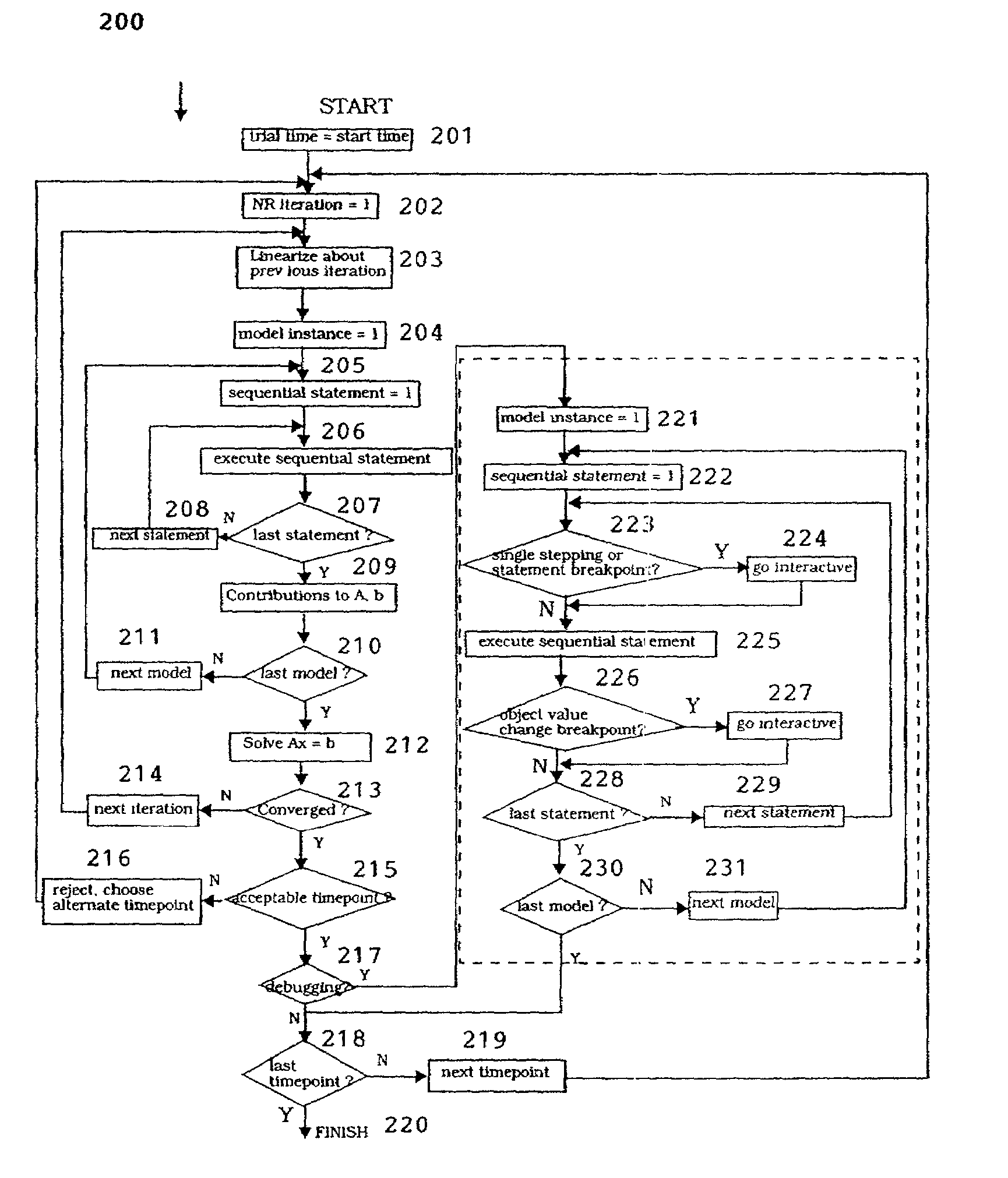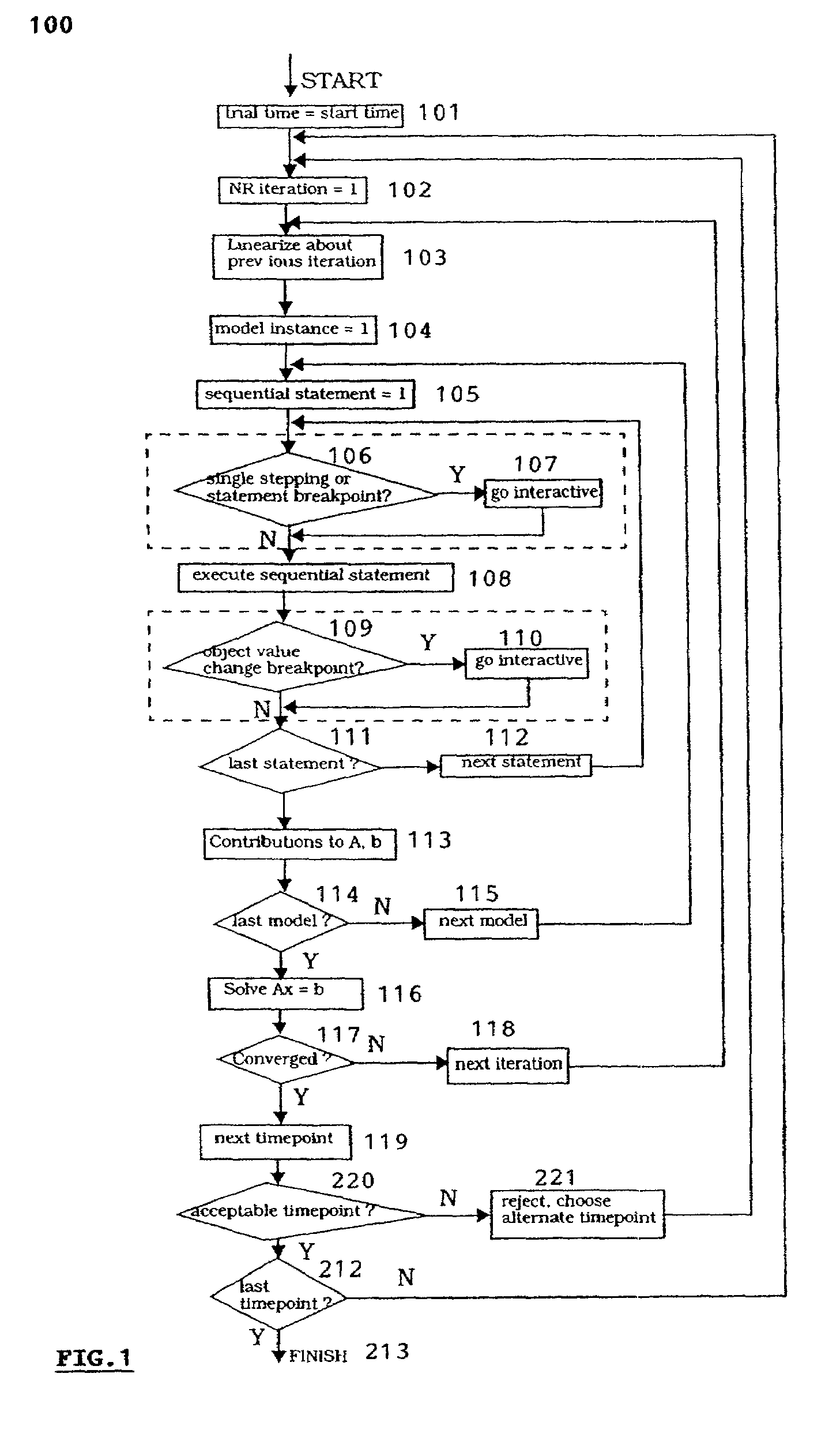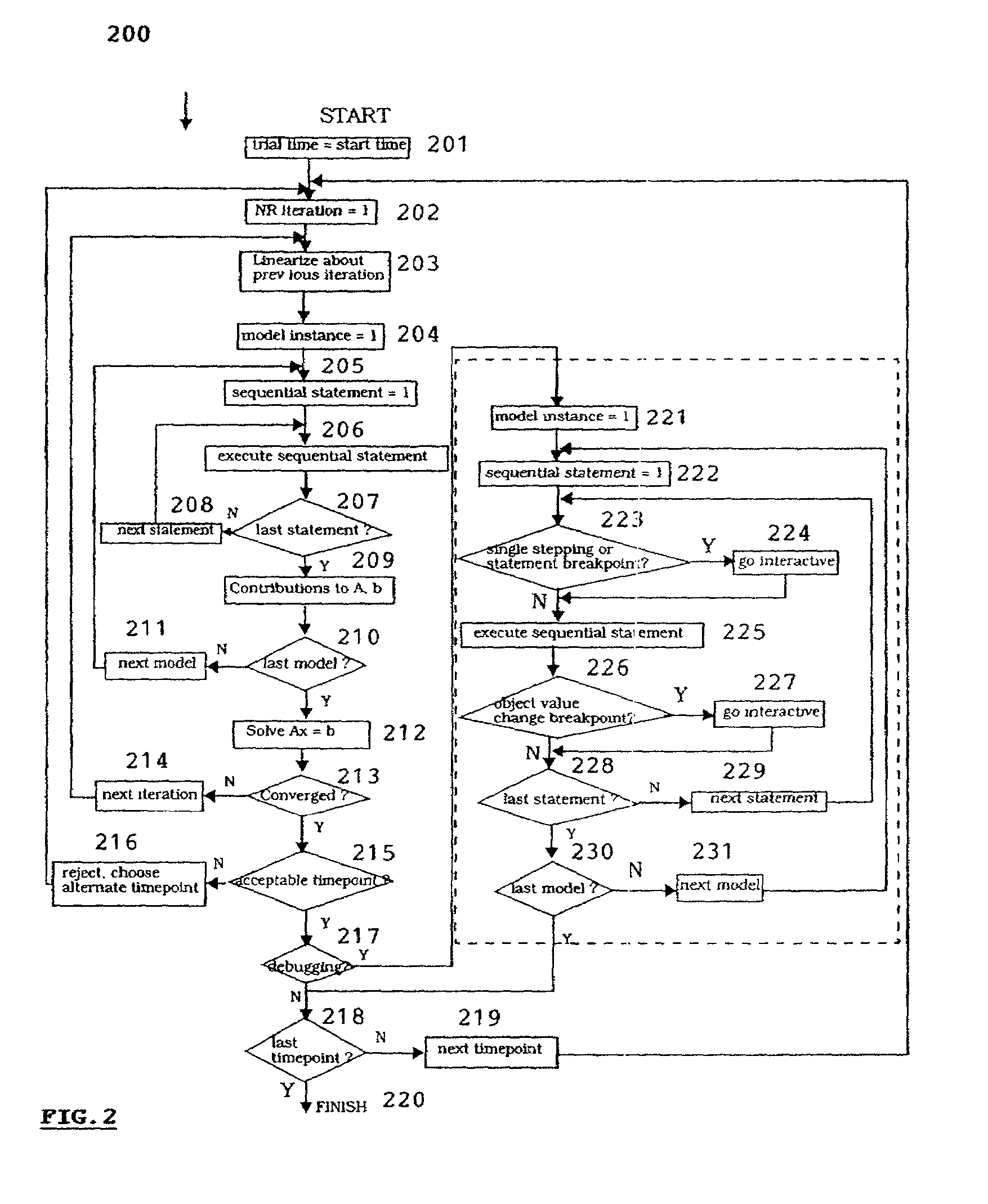Method for debugging of analog and mixed-signal behavioral models during simulation
a behavioral model and simulation technology, applied in the field of simulation and testing technology, can solve problems such as complicated process, slow or expensive analog simulation, and complicating process
- Summary
- Abstract
- Description
- Claims
- Application Information
AI Technical Summary
Benefits of technology
Problems solved by technology
Method used
Image
Examples
Embodiment Construction
[0044]Referring to FIG. 1, which is a flowchart for a standard analog module debugging approach which represents the prior art solution, the dashed line boxes including the steps 106–107 and 109–110 indicate the areas to which this invention has made modifications.
[0045]FIG. 2 is a flowchart illustrating the modifications to the transient analysis algorithm for enhanced debugging of analog behavioral code in analog and mixed-signal behavioral models according to the invention. The dashed box to the right of FIG. 2 including steps 221–231 replaces the two dashed boxes in FIG. 1. This replacement constitutes the enhancements to the standard transient analysis algorithm.
[0046]From Step 201 to Step 217, the standard transient analysis algorithm is followed regularly. The simulator sets a trial time 201; initializes Newton-Raphson iteration 202; linearizes about the previous iteration 203; and chooses model instance 204. Once the behavioral statements for each model have finished evaluat...
PUM
 Login to View More
Login to View More Abstract
Description
Claims
Application Information
 Login to View More
Login to View More - R&D
- Intellectual Property
- Life Sciences
- Materials
- Tech Scout
- Unparalleled Data Quality
- Higher Quality Content
- 60% Fewer Hallucinations
Browse by: Latest US Patents, China's latest patents, Technical Efficacy Thesaurus, Application Domain, Technology Topic, Popular Technical Reports.
© 2025 PatSnap. All rights reserved.Legal|Privacy policy|Modern Slavery Act Transparency Statement|Sitemap|About US| Contact US: help@patsnap.com



